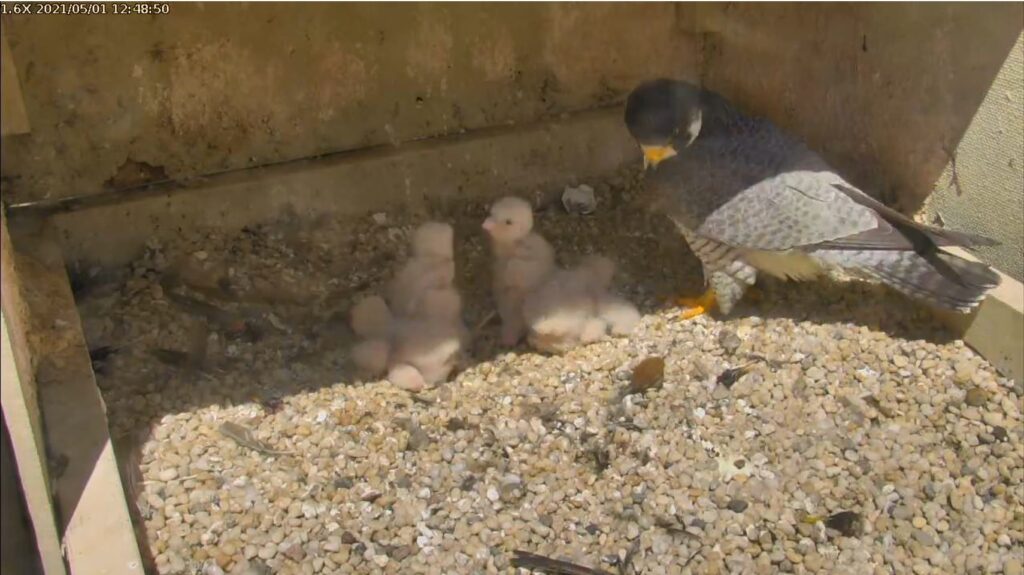
2 May 2021
Perhaps you’ve noticed that the Pitt peregrine nest stays clean during the chicks’ first week of life, then suddenly becomes a mess after a routine feeding. The reason has to do with the chicks’ age. This background explains why.
- Peregrines eat birds that they capture in flight (not on the ground). The male usually captures medium-sized songbirds because they are plentiful and smaller than he is.
- The male does all the hunting during incubation and brooding in the chicks’ first week of life. The female will start hunting when the chicks can be left alone.
- The female does all the feeding. (The male may do so later in the chicks’ lives.)
- Peregrines pluck their prey and remove the head and wings before eating. They can do this in flight or at a favorite perch.
- If the male is not in a hurry or the chicks are very young he completely prepares the prey — plucked, headless, wingless — before handing off to the female.
- When the chicks are old enough to learn how prey is prepared, the male hands over an unplucked bird. (Most males remove the heads. Ecco doesn’t bother.)
- When the female plucks, the nest gets messy.
The messy nest moment came yesterday morning, 1 May, at 6am. Ecco delivered a complete unplucked bird. It may have been a starling.
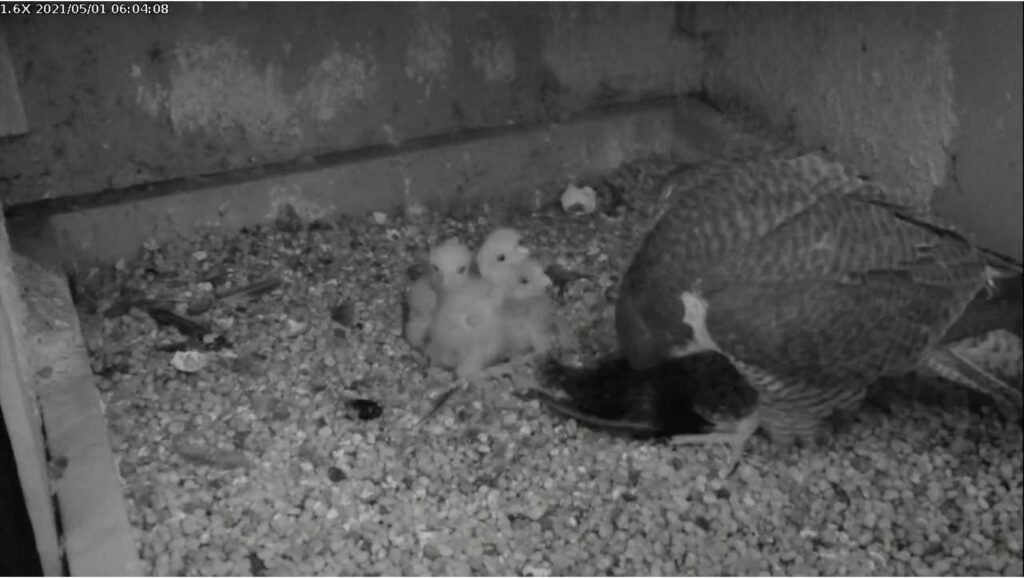
Morela plucked as she fed the chicks. Instant messy nest!
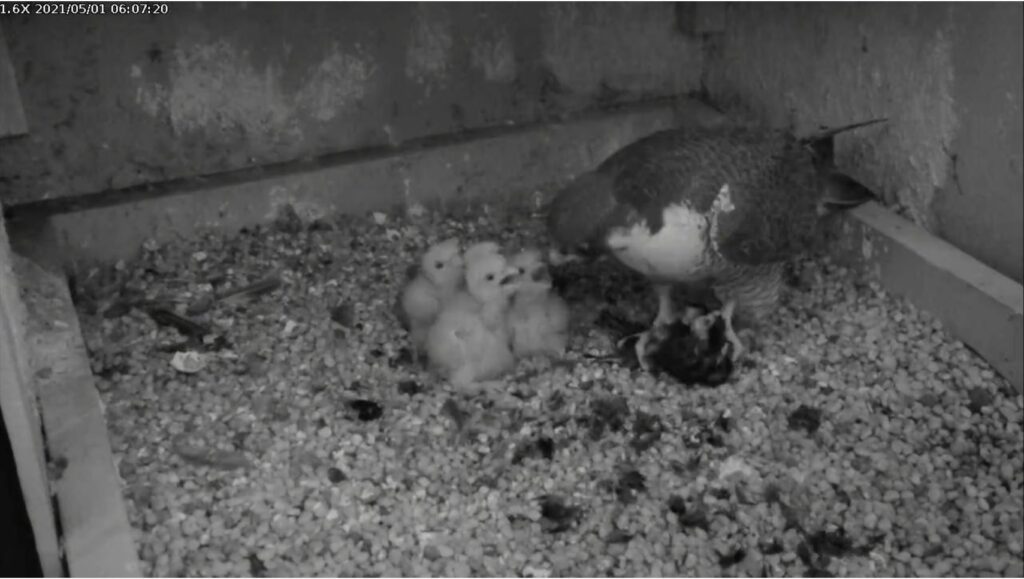
Yesterday the chicks ate 10 times in 24 hours. The nest got even messier!
Morela was in such a rush at the 7:09am feeding that the chicks ate feathers with their breakfast. No problem. It’s good for their digestion.
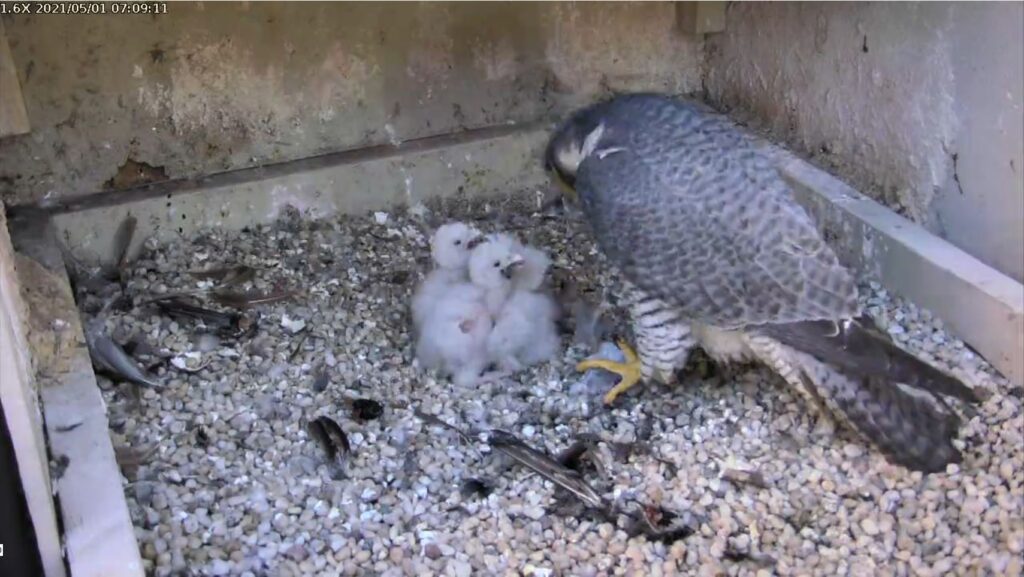
So what are they eating? It’s hard to see during this feeding at 11:54am.
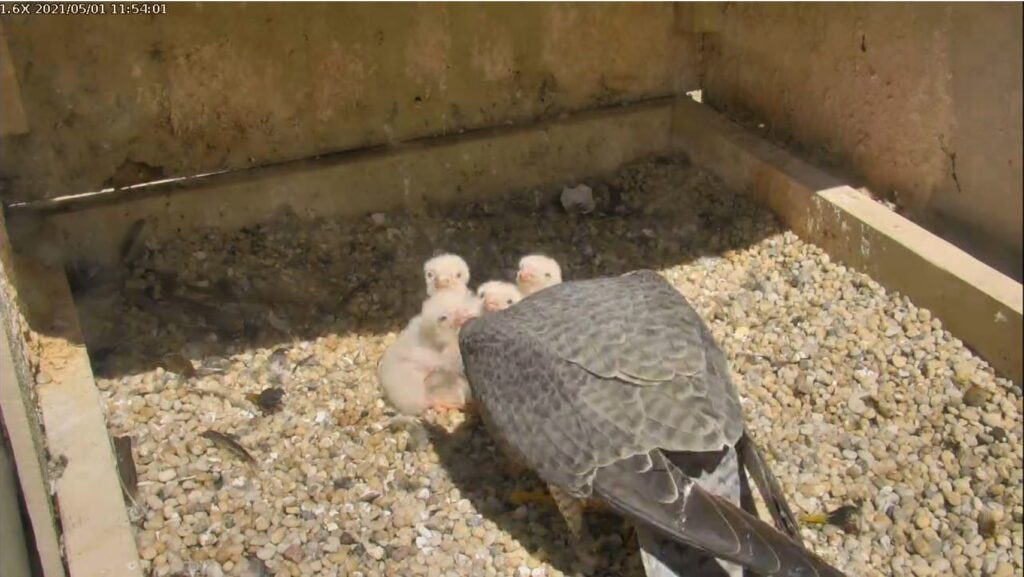
But the leftovers tell the tale. There are prey heads on the gravel. I see four in this image from 11:56am on Saturday.
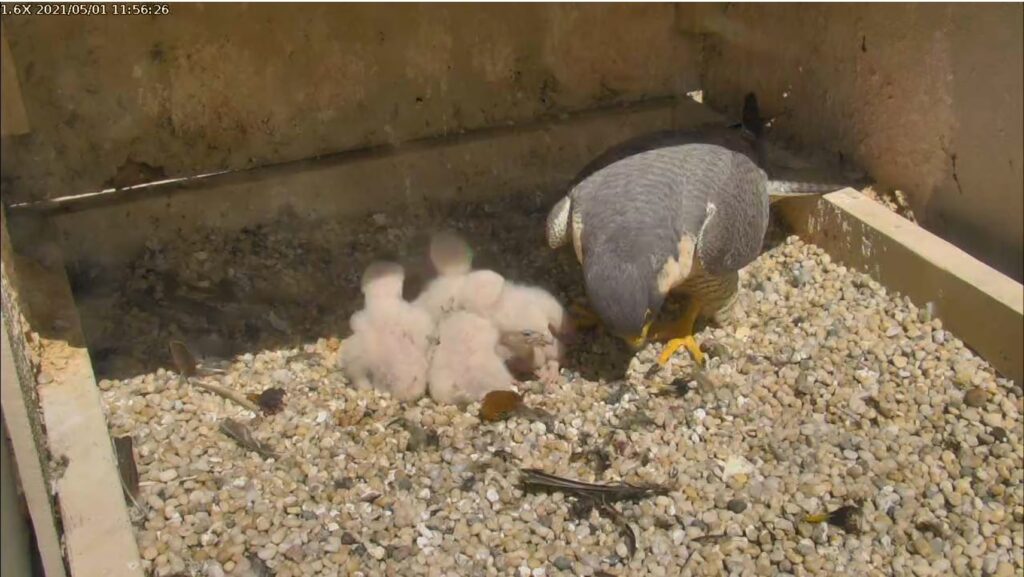
Circled below they are …
- American robin
- Wood thrush (at the 11:54 feeding)
- European starling, appears to be male
- European starling, male
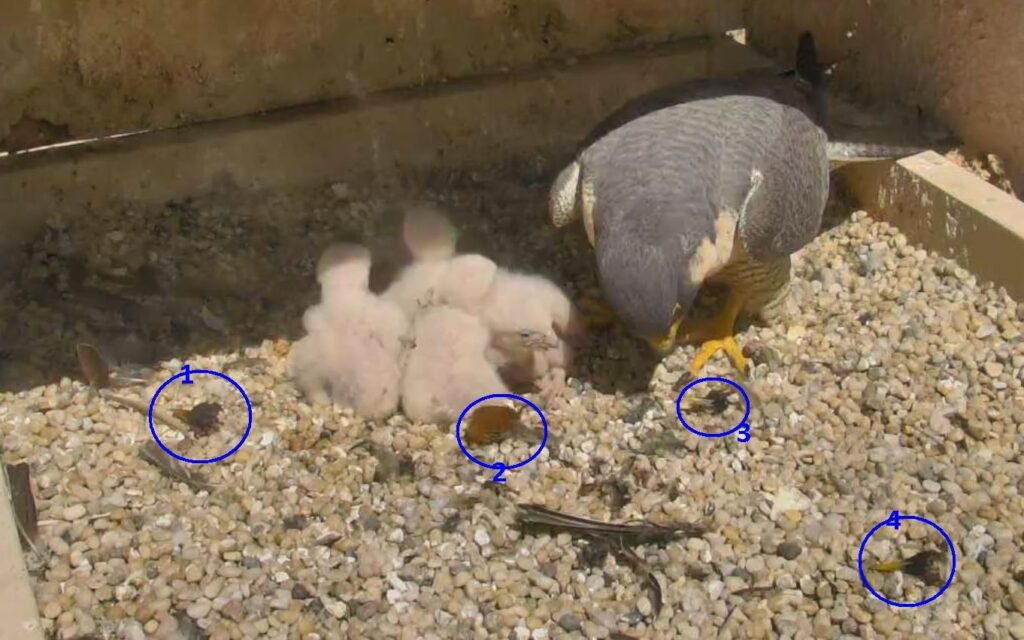
Sigh. I wish they had not eaten a wood thrush. 🙁
With 10 feedings a day you have a pretty good chance to see one on the National Aviary falconcam at Univ of Pittsburgh.
(photos from the National Aviary falconcam at Univ of Pittsburgh)
This was an awesome entry!
I am going to have to read this blog more often.
Thanks, Kate.
How can you possibly tell what prey they have eaten???!! Wow… absolutely fascinating…
I agree, Kate. I vote that Ecco catches more starlings and no more wood thrushes. If only I could have a say in it….